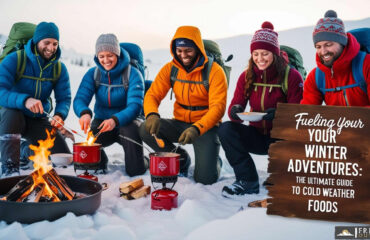
Comparison of store-bought and homemade hiking snacks in our taste test, highlighting flavors, nutrition, and convenience for your next outdoor adventure.
The Importance of Hiking Snacks
When you’re out on the trails, having the right snacks can make all the difference in your hiking experience. Snacks provide essential carbohydrates and proteins that help maintain energy levels during long hikes, keeping you fueled and ready to tackle those steep inclines and rocky paths. Imagine reaching the summit and feeling energized rather than fatigued; that’s the power of a well-planned snacking strategy. Those tasty morsels can also improve your mood and motivation, contributing to a more enjoyable outdoor adventure.
With an increasing number of outdoor enthusiasts, there’s a growing trend of comparing store-bought and homemade hiking snacks. Both options offer unique benefits, and many hikers are eager to discover which type can best meet their energy needs and taste preferences. Plus, the right balance of snacks can help prevent fatigue and keep spirits high on the trail.
Popular Store-Bought Hiking Snacks
Store-bought hiking snacks are convenient and often come from well-known brands like CLIF Bars, RX Bars, and Nature’s Bakery Fig Bars. These snacks are designed for energy and portability, making them a go-to choice for many hikers. They cater to various dietary needs, offering options that are gluten-free, high-protein, or low-sugar, ensuring that there’s something for everyone. However, keep in mind that these convenience snacks can range from $1 to $3 per serving, which can add up quickly on long trips.
While store-bought snacks are appealing for their ready-to-eat convenience, they often contain higher sodium levels. Some brands may even exceed the recommended daily limits for sodium, which is something to be cautious about if you’re monitoring your intake during your outdoor activities. Popular flavors like chocolate, peanut butter, and fruit blends make them enticing, but it’s essential to consider the nutritional profile and potential additives that come with packaged foods.
Homemade Hiking Snacks
On the flip side, homemade hiking snacks provide a customizable and often healthier alternative. You can whip up options like trail mix, energy balls, or wraps, allowing you to control the ingredients and cater to your specific dietary needs. These snacks can be budget-friendly, especially when you buy ingredients in bulk, making them cost-effective compared to many store-bought options.
Preparation time for homemade snacks can be quite short; many recipes can be made in under 30 minutes, making them a feasible choice even for busy schedules. Moreover, you can tailor the nutritional values to suit your preferences, opting for lower sodium and incorporating superfoods like chia seeds and quinoa, which can enhance energy levels for those challenging hikes. Customization allows you to create unique flavor combinations, ensuring that your snacks not only fuel your body but also satisfy your taste buds.
Taste Test Methodology
Conducting a taste test is a fun and effective way to compare store-bought and homemade hiking snacks. A panel of testers can evaluate both categories based on several criteria, including flavor, texture, nutritional content, and overall enjoyment. To keep things fair, a blind taste test format is ideal, helping to minimize bias and encourage honest feedback.
Make sure the sample sizes are consistent across both snack categories to ensure a fair comparison. Gathering qualitative feedback from participants will highlight specific likes and dislikes for each snack, providing valuable insights into preferences. It’s also beneficial to conduct the taste test outdoors, mimicking real hiking conditions, which can influence perceptions of the snacks and their enjoyment.
Taste Test Results
The results of the taste test often reveal a surprising preference for homemade snacks due to their freshness and unique flavors. Testers frequently report a more satisfying experience with these options, while store-bought snacks may fall short in terms of flavor authenticity and ingredient quality. For instance, homemade energy balls might score high for flavor and nutrition, whereas the familiarity of store-bought CLIF Bars might appeal to those seeking convenience.
Texture plays a significant role as well, with some testers gravitating towards chewy snacks while others prefer crunchier options, illustrating how personal preferences can vary widely. The feedback from participants can also shed light on popular flavor profiles that resonate with outdoor enthusiasts, driving future snack innovations.
Recommendations for the Best Hiking Snacks
Based on the taste test results, it’s wise to recommend a mix of both store-bought and homemade options for variety and balance. For homemade snacks, GORP (trail mix) and power balls stand out for their portability and high nutrient density, making them perfect for long hikes. When it comes to store-bought options, opt for those labeled low-sodium and made with natural ingredients to ensure a healthier choice.
Encouraging hikers to experiment with DIY recipes can lead to discovering personal favorites that align with taste and nutritional goals. It’s also essential to pack snacks in resealable bags to maintain freshness and allow for easy access while on the trail. Pre-portioning homemade snacks can help avoid overpacking and ensure controlled consumption during hikes. Don’t forget to pair your snacks with hydration options, like electrolyte drinks, to keep energy levels high throughout your adventure.
Summary of Store-Bought vs. Homemade Hiking Snacks
Both store-bought and homemade hiking snacks offer unique benefits, catering to different needs and preferences. Store-bought options provide convenience and consistency, while homemade snacks allow for customization and healthier ingredients. The taste test highlights that personal preference plays a significant role in snack selection, so trying both options can lead to exciting discoveries. Whether you choose to grab a quick snack off the shelf or whip up something in your kitchen, the key is to find what fuels your outdoor adventures best.




